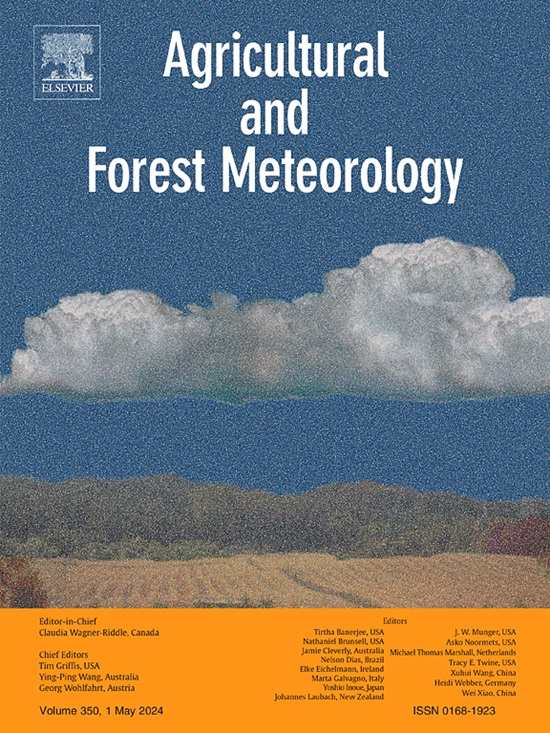Winter leaf reddening and photoprotection accessed by vegetation indices and its influence on canopy light-use efficiency of a Japanese cypress (Chamaecyparis obtusa) forest
IF 5.6
1区 农林科学
Q1 AGRONOMY
引用次数: 0
Abstract
Japanese cypress (Chamaecyparis obtusa Sieb. et Zucc.) is an evergreen conifer native to Japan and widely distributed in East Asia. Evergreen forests in temperate regions are usually exposed to high solar radiation and low temperatures during winter, a combination of stresses that can negatively impact leaf photosynthetic capacity. In response to excessive light energy stress under cold temperatures, Japanese cypress canopies exhibit a reversible color change associated with several photoprotective mechanisms known as “winter leaf reddening.” Here, several vegetation indices (VIs), including the photochemical reflectance index (PRI), rhodoxanthin index (RI), chlorophyll/carotenoid ratio index (CCI), triangular PRI index (tri-PRI), and red-green vegetation index (RGVI) were utilized to track the influence of winter leaf reddening and photoprotection on canopy-scale light-use efficiency (LUE) determined by the eddy covariance technique. Seasonal changes in VIs, environmental factors, and LUE in Japanese cypress canopies between 2017 and 2021 indicated that VIs could detect the phenology and LUE changes during winter leaf reddening. Our results suggest that winter leaf reddening occurrence is driven by prolonged low temperatures, and accompanied by dynamic xanthophyll cycle suppression, rhodoxanthin accumulation, and LUE reduction. Once stressful conditions are released, rhodoxanthin quickly decomposes and the remaining xanthophyll pigment may lead the canopy reddish-brown to persist longer. The integration of remote sensing and eddy covariance methods facilitates the validation of traditional results observed at the leaf scale within the context of the canopy scale, offering insights into how vegetation adjusts photosynthesis in response to environment stress.
求助全文
约1分钟内获得全文
求助全文
来源期刊
CiteScore
10.30
自引率
9.70%
发文量
415
审稿时长
69 days
期刊介绍:
Agricultural and Forest Meteorology is an international journal for the publication of original articles and reviews on the inter-relationship between meteorology, agriculture, forestry, and natural ecosystems. Emphasis is on basic and applied scientific research relevant to practical problems in the field of plant and soil sciences, ecology and biogeochemistry as affected by weather as well as climate variability and change. Theoretical models should be tested against experimental data. Articles must appeal to an international audience. Special issues devoted to single topics are also published.
Typical topics include canopy micrometeorology (e.g. canopy radiation transfer, turbulence near the ground, evapotranspiration, energy balance, fluxes of trace gases), micrometeorological instrumentation (e.g., sensors for trace gases, flux measurement instruments, radiation measurement techniques), aerobiology (e.g. the dispersion of pollen, spores, insects and pesticides), biometeorology (e.g. the effect of weather and climate on plant distribution, crop yield, water-use efficiency, and plant phenology), forest-fire/weather interactions, and feedbacks from vegetation to weather and the climate system.

 求助内容:
求助内容: 应助结果提醒方式:
应助结果提醒方式:


